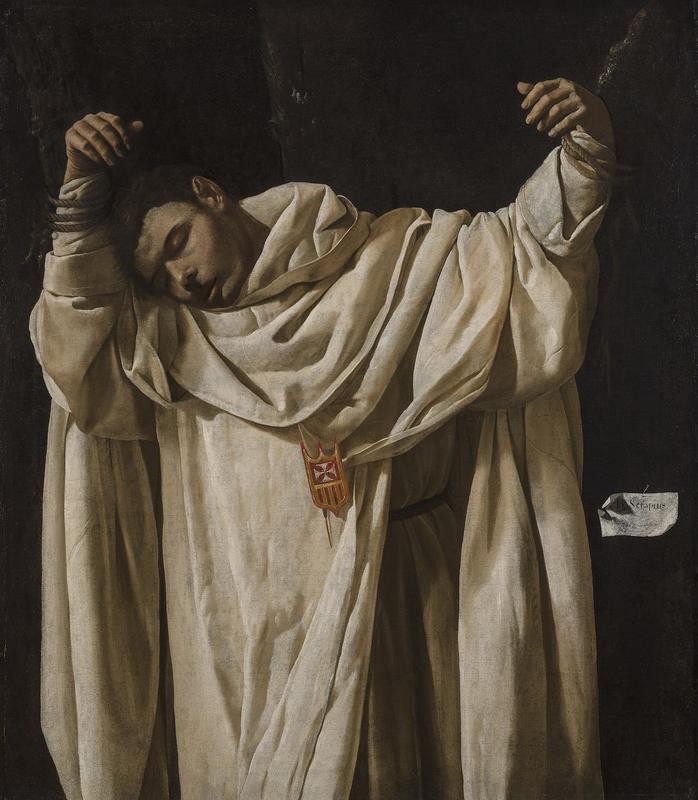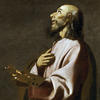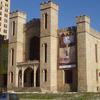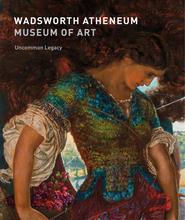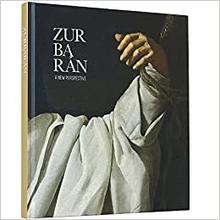More about Saint Serapion
- All
- Info
- Shop

Sr. Contributor
Peter Nolasco, an English monk, was the founder of the Mercedarian Order, aka Merced Calzada, or Shod Mercedarians.
This order had a special oath that the monks were required to take, in addition to the standard vows of chastity, poverty, and obedience. The “special oath” was a big one, too; Mercedarians were obligated to offer up their own lives in exchange for hostages who were Christian and who might give up their faith under torture.
This painting, in the Wadsworth Atheneum Museum of Art, was commissioned by Fray Juan Herrera, the leader of the Mercedarian monastery in Seville, called the Casa Grande de la Merced Calzada, to commemorate the canonization of Nolasco to sainthood. It was to be a part of a series of twenty-two paintings about the saint’s life, and his eventual martyrdom. The painting originally hung in the Sala de Profundis, (mortuary chapel), which was the room where wakes were held for deceased monks.
The series of paintings was to be done in a one-year period for 16,500 reales, and would require that he move from Extremadura to the Sevillian monastery (currently the Museo de Bellas Artes) with any of his people that he thought necessary. The entire series was probably never completed, and this painting may have been done so that Zurbaran could establish that he possessed the skills to finish the commission. One of the paintings in the series that has survived, Saint Peter Nolasco’s Vision, is in the Prado National Museum, Madrid.
The subject of the painting, Nolasco, apparently suffered a pretty horrific death, no matter which of the accounts written about him are true. One of the more generally accepted accounts has him being taken prisoner by English pirates in Scotland, where he was tied by his hands and feet to two posts, whipped, dismembered and disemboweled while still alive. If this wasn’t sufficient to kill him, just to be on the safe side, his neck was sliced just enough so that his head hung off to one side. A different version has him going to North Africa to exchange himself for Christian prisoners being held by the “Mohammedan enemy.” While waiting for the ransom to arrive, he apparently thought this would be a good time to attempt to convert his captors to his way of thinking; this did not work out well for him and the result was the same as with the pirate’s version of his death.
His violent and grisly death is what makes this image of Nolasco all the more striking; none of the wounds or blood is visible. Yes, he is tied by his hands and appears to either unconscious, asleep, or the most obvious: dead or on the verge of death. Zurbaran was not an artist to depict death in a graphic manner; even his Christ on the Cross shows only a minimal amount of blood, while another version appears to show none at all. As for the actual face in the painting, Zurbaran may have used a monk as a model for the unfortunate St. Serapion, as he was actually living in the monastery while he painted.
Sources
- Brown, Jonathan. Francisco De Zurbarán. New York: H.N. Abrams, 1973.
- Brown, Jonathan. Painting in Spain 1500-1700. New Haven: Yale University Press, 1998.
- Delenda, Odile, and Mar Borobia Guerrero María del. Zurbarán: a New Perspective. Madrid: Museo Thyssen-Bornemisza, 2015.
- Lewis, Mary Tompkins. “Silent Sacrifice.” The Wall Street Journal. Dow Jones & Company, December 23, 2011. https://www.wsj.com/articles/SB10001424052970203893404577098550955626994.
- Lubbock, Tom. “De Zurbaran, Francisco: Saint Serapion (1628).” The Independent. Independent Digital News and Media, October 23, 2011. https://www.independent.co.uk/arts-entertainment/art/great-works/de-zur….
- “Zurbarán, The Martyrdom of Saint Serapion.” Khan Academy. Accessed December 20, 2019. https://www.khanacademy.org/humanities/monarchy-enlightenment/baroque-a….
Featured Content
Here is what Wikipedia says about Saint Serapion (Zurbarán)

Saint Serapion or The Martyrdom of Saint Serapion is a 1628 oil painting on canvas by the Spanish artist Francisco Zurbarán (1598–1664). The work was commissioned by the Mercedarian Order to hang in the De Profundis (funerary chapel) hall of their monastery in Seville (now Museum of Fine Arts of Seville). Zurbarán is noted for his portrayals of penitent or martyred monks and saints. Critic Tom Lubbock used this painting to illustrate a difference in the way the martyrdom of two different saints were depicted. He contrasted the understated and calm depiction of St. Serapion's violent death, with the equally or more violent death of the Jesuit priest and martyr Saint Edmund Campion (1540–1581) who was publicly hanged, drawn and quartered in London in December 1581. The art critic draws a comparison in the manner of depiction of Campion's death and that of Saint Serapion of Algiers (1179–1240), a Mercedarian friar who fought in the Third Crusade of 1196 and was later martyred.
Saint Serapion is depicted by Zurbarán in a quasi-crucified pose, standing with each hand bound by ropes and chain to an overhead horizontal pole. According to Michael Brenson of The New York Times, his head "has shifted from the realm of the robe to the realm of the cape, which supports the head and seems to have the potential to lift it to the sky". The painting stops at the figure's knee level, while the strain placed on his arms is indicated by the heavy hanging folds of the drapes of the cloth hanging from left shoulder and right outstretched arm. The saint is identified by text on a small note placed to the left of his chest area.
The work makes strong use of chiaroscuro in the Spanish Tenebrist tradition of Jusepe de Ribera. The dominance of the white paint used to render the cloth creates a sense of tranquility, while the tension of the painting is derived from the dark shade created from the deep folds of the robes. In 2003, Scottish painter Alison Watt wrote, "Each fold has been pared down to the basic elements of light and shade. As a viewer you are seduced by this simplicity, only to realise you have been duped. Zurbarán has elevated the humble fabric of the robes of Saint Serapion to a divine level with pure, magnificent white."
Check out the full Wikipedia article about Saint Serapion (Zurbarán)

